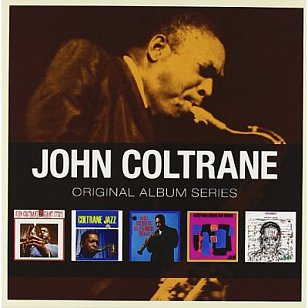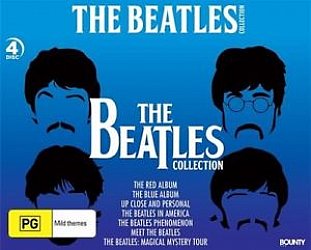Graham Reid | | 2 min read
John Coltrane: Blues to Bechet

So here are just some of the problems with jazz for anyone vaguely curious.
The history is too long and convoluted to get a grip on; the word "jazz" is so imprecise it means different things to just about everyone, and that includes people who know their jazz; there are far too many names (Bill Evans, the pianist or saxophonist?); artists shift through various groups and their sound can -- and probably should -- change with each new configuration; and if an artist has any length of a career they can often change their approach dramatically (Miles Davis had at least six distinct "phases") . . . and worst of all if you are given the wrong start it can put you off forever.
More fool me but the first album by John Coltrane -- an acknowledged musical and spiritual genius in the art form -- I was given as an impressionable teenager was the difficult Sun Ship of '65 and frankly I just didn't "get" it.
Perhaps if I had been introduced via the sublime A Love Supreme of the previous year I might not have fled for almost a decade. Or maybe Giant Steps (on Atlantic, from '59) where the pulsating rhythm behind his exploratory saxophone playing keeps your attention and the whole thing has a rhythmic bounce, or just takes you to a quiet place with the ballad Naima which became one of his best loved, and most covered, tunes.
Another entry point on Coltrane, who died in '67, would be My Favourite Things (also on Atlantic), the title track being that popular tune from The Sound of Music which he explores for about 14 minutes. As an introduction to jazz improvisation (making it up as they go along), this album is a masterclass.
And on each of those albums you have exceptional players like pianists Wynton Kelly and McCoy Tyner and drummers Jimmy Cobb and Elvin Jones, whose careers you can also follow using these records as departure points.
Coltrane wasn't on the Atlantic label for very long -- just those two albums, with Coltrane Jazz between them -- but after his departure the label released Coltrane's Sound and Coltrane Plays the Blues, both from the same sessions with Tyner, bassist Steve Davis and drummer Jones (who were on My Favourite Things).
So the Original Album Series set which has all five of these albums is a nicely precise look at the master in '59/'60 with some easy-entry standards, enough stretching out to make you curious to hear more and they caught Coltrane just after the time he recorded with Miles Davis on the classic Kind of Blue.
So here is an approachable collection of Coltrane which has convenient reference points . . . but also takes a venture to the dark side on Coltrane's Sound (the one with the melting face on the cover -- which he disliked -- anticipating a later Peter Gabriel album) which is perhaps the weakest in this set.
 Don't overlook the blues album though where Tyner drops out and Coltrane experiments with a pianoless trio again as he had done . . .
Don't overlook the blues album though where Tyner drops out and Coltrane experiments with a pianoless trio again as he had done . . .
Ah, but let's not get bogged down in detail.
This five CD set is a tidy $20 at JB Hi-Fi stores (here) and given that it is an excellent introduction to both Coltrane and the art form that is jazz, that makes this our Bargain Buy.





post a comment